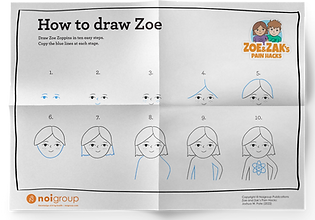

Parents & Carers
Hi and welcome!
Pain is really complex and it can be difficult to talk about with children. We’ve developed these books to help children learn and talk about pain with their friends, you (as their parents), and even other adults and teachers. Learning about pain can be so great for understanding ourselves, and in turn, this helps us with our wellbeing. Children need to talk about their experiences in order to keep learning as they grow.
As a parent, you may like to have more information. Our team thought that a list of resources (in addition to what’s listed above) could be useful for you if you wanted to learn more for yourself.
With 1 in 5 adults experiencing persisting pain, we want you to be well-equipped! You could check out the following resources:
Hello health professional, we’re glad to have you here! The following resources are specifically for you as a clinician working with children challenged by persistent pain.
First, here is the qualitative research study on which the language in this book was based. This was part of Josh’s PhD.
The story in this book is based on the following anecdote: Fisher JP, Hassan DT, O’Connor N. Minerva. BMJ. 1995;310:70.
Next, here is the Concept of Pain Inventory (COPI) initial validation study. This tool enables (a) targeted pain science education, and (b) the evaluation of the effectiveness of pain science education.
COPI items that may change the most with this book:
-
7. You can feel a lot of pain even when an injury is small.
-
10. The brain can make pain better or worse.
-
14. The brain processes lots of details before you feel pain.
We encourage you to watch this brief video of Josh discussing preventative education with David Butler:
And our final recommendation at this point in the Zoe Zoppins journey is a book for clinicians who want to know a lot more about pain. Go check out Explain Pain Supercharged – the Clincian's Manual (Noigroup Publications, 2017)
G’Day teachers! You can play a pivotal role in the future of persistent pain. There are several studies investigating the complexities of how teacher’s think about pain. So far, we know it’s important, and we have some resources to suggest for you.
We encourage you to watch the ‘Mysterious Science of Pain’ video. Perhaps you could watch this as a class, read the first Zoe Zoppins book, and then discuss the questions at the end of the book?
We would love to hear how you find the printable activities. You can contact Josh via the contact page on his website
Do you want to see the online activities (parents, clinicians, & teachers) for the other books in the series?

Also, here are the links to the Kid's pages for each book:











